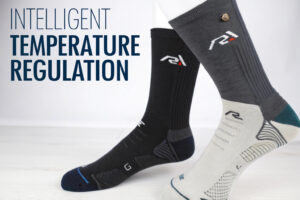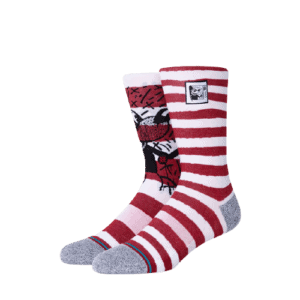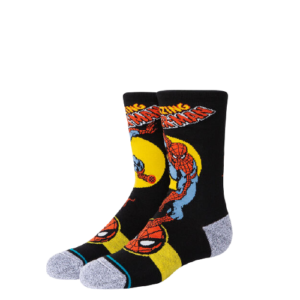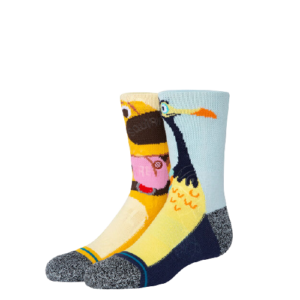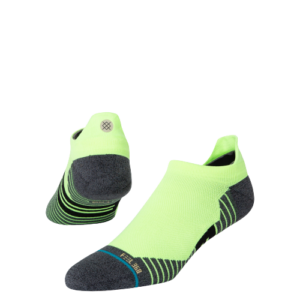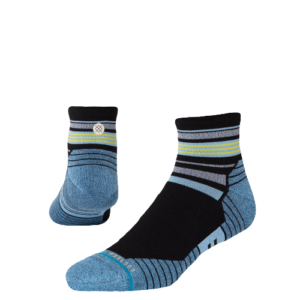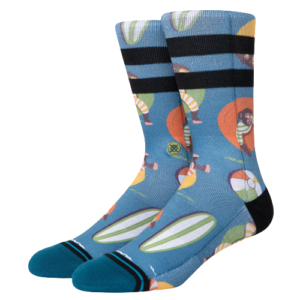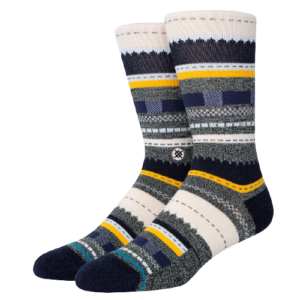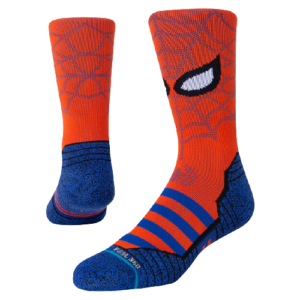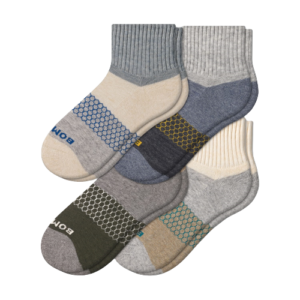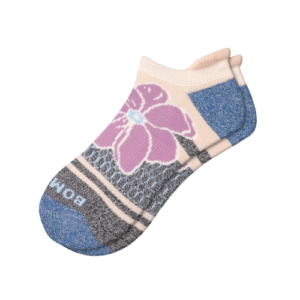As a sock manufacturer with over a decade of experience, I've seen firsthand how the wrong sock materials can lead to skin irritation, discomfort, and even infections for wearers. Many of our global clients, especially those in the US and EU markets, are increasingly asking for socks that not only feel good but also actively promote foot health. The question of how to develop socks with pH-balanced fibers is no longer a niche concern but a critical demand from health-conscious consumers. This article will guide you through the entire process, from fiber selection to production, ensuring your sock line stands out in a competitive market.
Developing socks with pH-balanced fibers involves selecting specific natural or treated fibers that help maintain the skin's natural acidic mantle, typically around pH 5.5. The process includes fiber sourcing, yarn spinning with pH-regulating additives if necessary, knitting, and a careful dyeing and finishing process that avoids harsh alkaline chemicals. This approach is crucial for skin health as it protects the skin's acid mantle, preventing the growth of harmful bacteria and fungi, reducing irritation, and maintaining overall foot comfort, especially in moisture-prone environments inside shoes.
Understanding the "why" is just the first step. The real challenge lies in the "how"—the practical integration of this concept into a scalable, commercial sock production line. Let's dive into the specific steps and considerations to transform this innovative idea into a best-selling product for your brand.
What are pH-Balanced Fibers and Why Do They Matter?
The term "pH-balanced" is everywhere in skincare, but its application in textiles, particularly socks, is a game-changer for product development. For years, the sock industry focused primarily on cushioning and moisture-wicking. However, the direct and prolonged contact socks have with skin makes pH a critical factor. Ignoring this can lead to products that, despite other great features, cause discomfort for the end-user. This is a significant pain point for buyers who face returns and negative reviews due to skin reactions.
pH-balanced fibers are materials that either naturally possess or are chemically treated to have a mildly acidic pH, closely matching the skin's natural pH level of approximately 4.5 to 5.5. They matter because the skin's acid mantle, a thin protective layer, operates at this pH to inhibit the growth of pathogenic bacteria and fungi, maintain moisture, and support the skin's barrier function. Socks made from alkaline or neutral fibers can disrupt this mantle, leading to dryness, irritation, and conditions like athlete's foot, whereas pH-balanced socks work in harmony with the skin to promote its natural defenses.

How does the skin's pH level affect foot health?
The skin's surface is naturally acidic, forming what is known as the "acid mantle." This mantle is our first line of defense against environmental aggressors like bacteria, viruses, and other potential contaminants that can cause infections and disorders. When you wear socks made from non-pH-balanced materials, especially those that become damp with sweat, the alkaline environment can neutralize this protective acidic layer. This disruption compromises the skin barrier, making it more susceptible to bacterial infections and fungal growth, such as the common athlete's foot. Maintaining the correct pH is therefore not just about comfort; it's a fundamental aspect of preventative foot healthcare.
Which natural fibers are inherently pH-balancing?
While many fibers can be treated, some are naturally advantageous. Merino wool is a superstar in this category. Its fiber surface has a natural pH that is very close to that of human skin. Furthermore, organic cotton, when processed without harsh alkaline chemicals in the scouring and bleaching stages, can retain its natural, slightly acidic pH. Bamboo-derived viscose also tends to be more neutral to slightly acidic, especially when processed with closed-loop systems that control chemical use. We often recommend blends of these fibers to our clients to achieve the perfect balance of pH control, durability, and moisture management for their target market.
How to Source and Select pH-Balanced Yarns?
Sourcing the right yarn is the most critical step in developing effective pH-balanced socks. It's a decision that impacts everything from cost and compliance to final product performance. From our base in Keqiao, we have access to a vast network of yarn spinners, but finding partners who truly understand the technical requirements for pH stability is key. A common mistake is to assume all natural fiber yarns are automatically suitable, but the manufacturing process of the yarn itself can drastically alter its pH.
To source and select pH-balanced yarns, start by partnering with spinners who provide detailed mill certificates that include pH test results. Key selection criteria involve prioritizing natural fibers like merino wool and organic cotton, or specialized synthetic fibers like Tencel™ that are processed with eco-friendly, low-pH methods. It is essential to conduct in-house lab testing on yarn samples using methods like AATCC 81 or ISO 3071 to verify the pH value falls within the skin-friendly range of 4.0-7.5 before proceeding to bulk production.

What certifications should you look for in a yarn supplier?
Certifications are your first line of defense against subpar materials. For pH-balanced and skin-healthy yarns, you must look for the OEKO-TEX STANDARD 100 certification. This globally recognized label specifically tests for harmful substances and checks the pH value of textiles to ensure they are skin-friendly. For organic fibers, the GOTS (Global Organic Textile Standard) certification is crucial as it mandates strict environmental and social criteria throughout the production process, including limits on chemicals that can alter pH. We insist on these certifications for all our eco-friendly socks projects, as they provide independent verification and build trust with your end-consumers.
How do you test yarn for pH balance in a lab?
In our CNAS-certified lab, we follow a standardized testing protocol. A sample of the yarn is first cut into small pieces. We then create an aqueous extract by soaking the sample in distilled water under controlled conditions. The pH of this water extract is then measured using a calibrated pH meter. The entire process adheres to the AATCC Test Method 81 or its international equivalent, ISO 3071. This objective data is non-negotiable. We provide these test reports to clients like you for every yarn batch, ensuring complete transparency and guaranteeing that the materials going into your socks meet the promised skin-health standards.
What is the Production Process for pH-Balanced Socks?
Translating a pH-balanced yarn into a finished sock requires a meticulously controlled manufacturing process. Many conventional sock production steps, particularly dyeing and finishing, involve highly alkaline or acidic chemicals that can throw the final product's pH completely off balance. The goal is to engineer a "clean" production line where every stage is optimized to preserve the yarn's inherent skin-friendly properties or to actively impart them.
The production process for pH-balanced socks involves carefully managed stages to maintain a skin-friendly pH. Key steps include using pre-tested pH-balanced yarns, implementing low-impact dyeing with neutral pH dyes and auxiliaries, and employing a neutralization process after dyeing if necessary. The final finishing wash uses mild, acidic buffers to set the pH between 4.5 and 6.5. Rigorous quality control testing on the final sock product is essential to ensure the pH level has been maintained throughout the entire production cycle.

How does the dyeing process affect the final pH of socks?
The dyeing process is often the biggest culprit in altering pH. Many dyes, particularly reactive dyes for cotton, require a high pH (alkaline) environment to fix the color onto the fiber. This leaves the sock in an alkaline state, which is detrimental to skin health. To combat this, we work with our local dyeing partners to use specialized low-alkali or neutral pH dyeing recipes. After dyeing, a crucial "neutralization" step is added, where the socks are rinsed with a mild acidic solution. This step brings the pH back to the desired acidic range, locking in color while ensuring skin safety. This controlled process is a cornerstone of our custom socks development for sensitive skin.
What finishing techniques are used to set the pH?
After dyeing and neutralization, the final finishing bath is where we "set" the pH. We use a soft finishing bath that contains a mild acidic buffer, such as a citric acid derivative. This not only ensures the sock reaches the ideal pH but also helps to lock it in, making it more durable through multiple washes. This finishing bath can also be combined with other desirable treatments, such as antibacterial agents or moisture-wicking finishes, that complement the pH-balancing function. We've perfected this recipe over hundreds of production runs, creating a sock that feels soft, performs well, and remains kind to the skin throughout its lifespan.
How to Market pH-Balanced Socks to Health-Conscious Consumers?
Creating a technically superior sock is only half the battle; effectively communicating its benefits is what drives sales. The market for wellness and self-care is booming, and positioning your sock line within this trend can command a premium price and foster brand loyalty. The key is to translate the technical term "pH-balanced" into tangible benefits that resonate with the everyday experiences and pain points of consumers.
To market pH-Balanced socks effectively, focus on clear, benefit-driven messaging that highlights skin comfort, odor prevention, and overall foot wellness. Use educational content on labels and digital platforms to explain the science simply, such as "Works with your skin's natural defenses." Leverage certifications like OEKO-TEX on packaging for instant credibility. Target your advertising to audiences interested in dermatology, natural wellness, athletic performance, and sustainable living, emphasizing the socks as a daily essential for proactive health.

What are the key selling points for pH-balanced socks?
The value proposition should be multi-faceted. First, emphasize Reduced Skin Irritation – position these as the solution for anyone who suffers from itchy, dry, or sensitive skin on their feet. Second, highlight Natural Odor Resistance – by maintaining a healthy skin environment, these socks prevent the bacteria that cause foul smells, reducing the need for harsh antibacterial chemical treatments. Third, connect them to Active Foot Health – market them not just as socks, but as a preventative measure for common foot ailments. This positions your brand as knowledgeable and caring, moving the conversation beyond just price and style.
How can certifications boost your marketing claims?
In a world of greenwashing, certifications are your proof. Displaying the OEKO-TEX STANDARD 100 label directly on your sock packaging or hangtag is a powerful visual cue that tells consumers the product has been scientifically tested and is safe for their skin. It instantly validates your "pH-balanced" and "skin-friendly" claims. For eco-friendly socks made with organic cotton or bamboo, adding the GOTS logo further strengthens your brand's commitment to health and sustainability. We help our clients integrate these certification marks seamlessly into their packaging and branding strategy, providing them with the necessary documentation and test reports to back up every claim made in the market.
Conclusion
Developing and bringing pH-balanced socks to market is a comprehensive process that blends material science, precise manufacturing, and strategic marketing. It begins with a deep understanding of skin biology and extends through rigorous yarn sourcing, a controlled production line, and finally, a compelling consumer narrative. This holistic approach allows brands to transcend the basic function of a sock and offer a genuine wellness product that meets the growing demand for apparel that supports, rather than challenges, our health.
Mastering the development of pH-balanced socks positions your brand at the forefront of the health and wellness apparel movement. If you are ready to create a high-quality, skin-friendly sock line that resonates with today's discerning consumers, we should talk. Our team has the expertise and supply chain mastery to guide you from concept to delivery. For a direct conversation about your specific needs, please contact our Business Director, Elaine, at elaine@fumaoclothing.com. Let's co-create the next benchmark in comfortable, healthy footwear.






